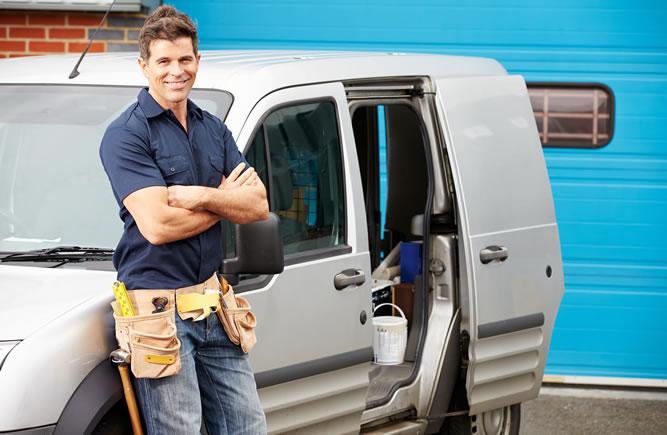Parquet Flooring Cost
Last updated 11th June, 2025
Fancy an upgrade to parquet flooring?
This article lays out everything you need to know about fitting a parquet floor. We discuss the cost of parquet wood flooring and include the installation fees you can expect. On average, prices for wooden parquet flooring will range from £340-£2800.
We'll aso give you the details on standard timeframes for the work, the different types of parquet floors, and exactly what the job entails.
Let's get started below!
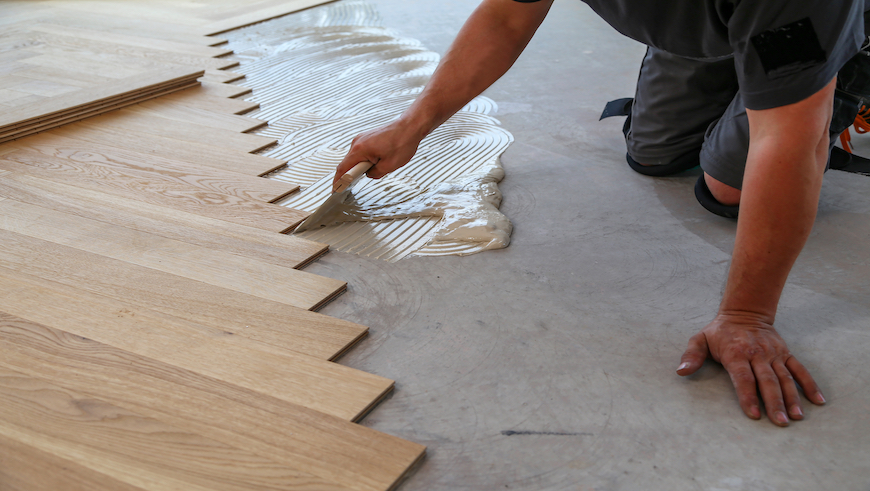
Table of Contents
- How much does parquet flooring cost to install?
- Additional parquet flooring costs
- Labour cost to lay parquet flooring
- Factors that impact parquet flooring installation costs
- What does laying parquet flooring involve?
- DIY parquet flooring installation
- Building regulations and planning permission for parquet flooring
- FAQs
- How to find & hire a parquet flooring specialist
How Much Does Parquet Flooring Cost to Install?
What is parquet flooring exactly?
This type of flooring is named after its design as it consists of a geometric mosaic of timber pieces. The purpose of this is purely decorative.
In general, the patterns in such floors tend to be angular and geometrical. These shapes can include triangles, lozenges, and squares, although curves are also possible.
Parquet Flooring Prices
Let’s take a look at the average cost of laying parquet flooring based on the type of wood used and per the size of the floor.
Here’s the average cost to lay vinyl flooring per square metre:
| Size of Flooring | Beech Parquet | Maple Parquet | Laminate Parquet |
|---|---|---|---|
| 8m 2 floor | £450 to £860 | £400 to £800 | £340 to £580 |
| 12m 2 floor | £700 to £1400 | £600 to £1100 | £500 to £1000 |
| 16m 2 floor | £900 to £1650 | £900 to £1500 | £650 to £1100 |
| 20m 2 floor | £1050 to £2000 | £950 to £4200 | £760 to £1300 |
| 25m 2 floor | £1300 to £2400 | £1150 to £2100 | £900 to £1600 |
| 30m 2 floor | £1500 to £2800 | £1350 to £2550 | £1100 to £1850 |
These are the factors that could shape the variable price of installing parquet flooring:
- Ease of access
- Underlay
- Type/size of flooring
- Materials used
Additional Parquet Flooring Costs
There are some extra jobs you might want to pay for along with having parquet flooring installed. Let’s look at some common examples.
Underfloor Heating
A money-saving and energy efficient way of heating a room is with the use of underfloor heating. This could also make for a particularly comfortable underfoot.
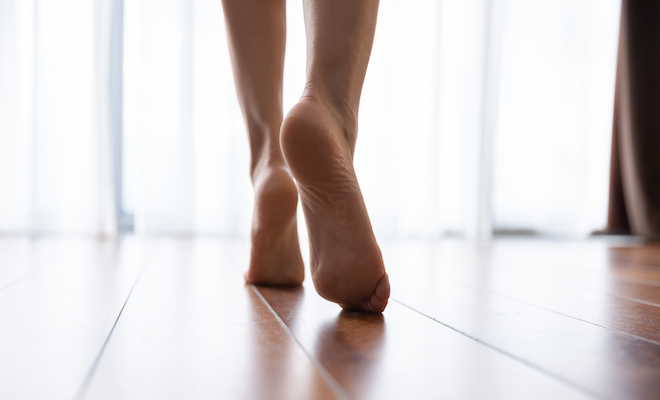
Here’s how much it may cost:
- New build property with wet underfloor heating - £2500 to £3000
- New build property with dry underfloor heating - £1000 to £1500
- Home renovation with wet underfloor heating - £4000 to £4500
- Home renovation with dry underfloor heating - £1500 to £2000
Painting a Room
You may wish to have one or several walls (more than likely every wall) in a room painted, either with some fresh coats of the existing colour or for new colours. One way or another, this could fix a dull room by making it new, exciting, and vibrant!
Regardless, the following price estimate would apply:
- Painting a room - £200 to £300
- Stripping, prepping, and painting a room - £300 to £400
- As per the 2nd job + painting the room’s woodwork - £400 to £600
You may also be interested in having a painted parquet floor at the end of everything.
Parquet Flooring Cost Breakdown Calculator
Individual costs for installing a 16m² laminate parquet floor - £1200
Materials
£800
Tradesmen
£400
Waste Removal
£0
Labour Cost to Lay Parquet Flooring
We’ll now look at the labour parquet floor cost separate to the overall cost. The cost of labour along with that of supplies and waste removal make up the total cost.
It’s likely to cost around £90 to £150 per day in labour expenses. But how many days would the work actually take?
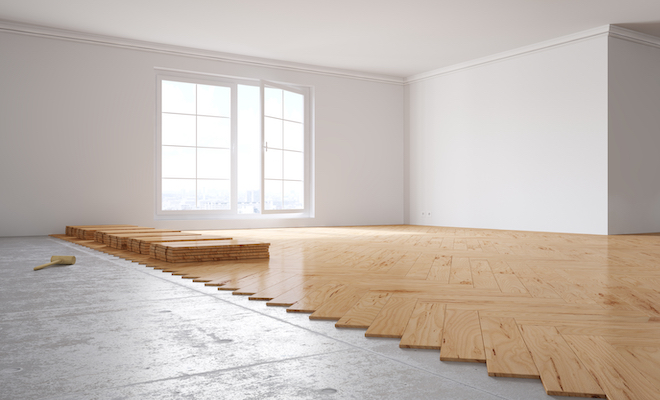
Well here’s some estimates…
Timeframe of Installing Parquet Flooring:
- 8m2 floor - 1.5 to 3 days
- 12m2 floor - 2 to 3 days
- 16m2 floor - 2 to 3.5 days
- 20m2 floor - 2 to 4 days
- 25m2 floor - 3 to 5 days
- 30m2 floor - 4 to 5 days
The following factors could shape the labour cost and duration of this work:
- Size of parquet flooring
- Ease of access
- State of the work area
Factors That Impact Parquet Flooring Installation Costs
There are a range of factors that can shape the price of having parquet flooring installed. In this section, we’ll explore these factors in more detail.
Size/Type of Parquet Flooring
The type and size of parquet flooring is relevant given that the longer it takes for the floor to be installed, the higher the labour cost is likely to be.
Installation Area/Ease of Access
The state of the work area matters because the more difficult it is to work with the longer the work may last and therefore, once more, the more the labour expenses will probably end up.
Underlay
The type, size, and quality of the underlay used is relevant given that this will add to your overall bill.
Location of Property
As for where you live, this is relevant since labour costs differ across the United Kingdom. The specific reason for this is that since living costs differ by region, tradespeople set different prices depending on where they are based. Other factors such as the size of competition in an area can also influence prices.
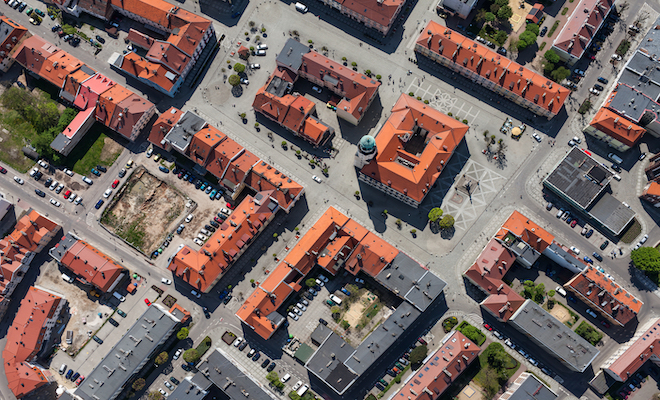
What Does Laying Parquet Flooring Involve?
The exact process of fitting parquet flooring could differ based on the approach used and the type of flooring, among other factors. However, the following description is a common enough assessment of what’s involved.
1. Hiring a Contractor
Unless you’d prefer to undertake this work DIY, the first step is to hire the right contractor/company for the job. Before making a decision, it’s worth acquiring around 3+ quotes from a range of individuals/companies, as well as some references. This will help you secure bang for your buck.
2. Adding the Underlay
You’ll want to fit the correct underlay for the job. However, it’s important that you first check that the floor is level. While the floor could be made level by securing any loose boards (if it’s wooden) among other steps to level out the floor. However, if needed, you can add a self-levelling compound. This should be done carefully per the manufacturer’s instructions.
In most cases around 2mm underlay can be added before a fibreboard may be added atop. More underlay may be needed than first anticipated depending on whether the floor is level come the end of the process.
3. Start in the Centre
You’ll want to start in the middle of the room and begin laying down pieces of parquet floor in the direction that you intend the floor to run. It’s critical that the middle row is straight so that everything else can be built around it and fall into place.
When laying the middle row along the centre line you may use a PVA glue or another suitable product to make sure that the planks stay in place just right and remain still for when clicking them into place with further planks. It’s important that you know how to lay a parquet floor but the manufacturer will provide helpful instructions, which should be easy enough to follow.
4. Continue Adding the Flooring
From here, you can work outwards from the middle and continue adding the parquet flooring. On reaching the border, you’ll need to cut, trim, and add additional tailored pieces (i.e. cut to shape and size) to fill in gaps that leave the flooring set perfectly against the wall without any gaps.
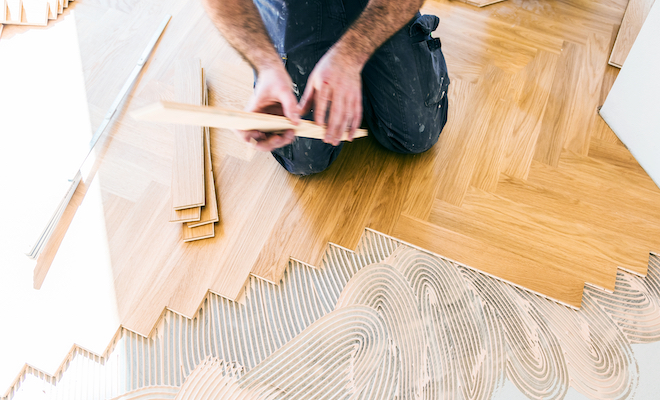
Fill the border until the entire room is safely and accurately filled with flooring. After this point, any remaining wood can be recycled or kept for later reuse.
DIY Parquet Flooring Installation
Laying parquet flooring as a DIY project is certainly achievable. As with any work there are some risks/hazards involved, from carrying the planks around to dealing with sharp/dangerous equipment and tools. There’s also the risk of doing something wrong when fitting the parquet flooring yourself.
When laying a simple click system, where the boards easily click into place, you may only need the following tools and equipment:
- Suitable parquet flooring adhesive (glue)
- Safety gloves
- Protective eyewear
However, for other types of parquet flooring you may also need additional equipment:
- Pneumatic flooring nailer
- Drill and drill bits
- Hammer and nail set
It’s also good to know that as a general rule, if you're carrying out the work yourself, it's unlikely you'll need approval from local authorities or a qualified professional.
Common Issues Laying Parquet Flooring by Yourself
If you're not used to fitting parquet flooring, then it can sometimes prove more challenging than expected.
For example, it's important to keep the subfloor beneath the boards prepared correctly, ensuring a smooth service without any debris. If it is uneven before you begin, this can lead to the floor not laying properly, causing gaps or instability.
Another potential issue is getting the alignment of the boards correct, especially if they follow a particular pattern. Ensure you decide which order you are laying the pieces of flooring before you glue or nail them down, as it can be difficult to correct once completed.
If you are using an adhesive, applying the correct amount is crucial. By using too much, it can create extra mess to clean up but too little and the boards may not stick properly or could become unstuck at a later date.
Building Regulations and Planning Permission for Parquet Flooring
If you live in a listed building or are laying parquet flooring as part of a new extension or outbuilding, then it's recommended you check with your local council before going ahead with any work.
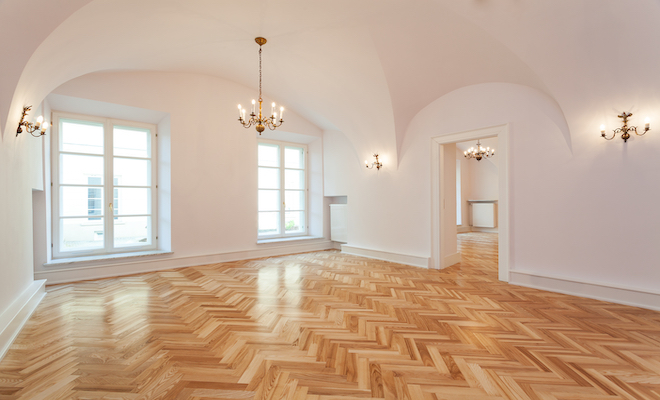
When laying parquet flooring (or any type of flooring for that matter), at least one of the following rules must be met:
- If it’s a ground level floor, the flooring must offer resistance to heat loss and ground moisture
- The floor should provide structural support to the contents of the room, as well as the weight of the floor and its users
If you do need building regulations approval, expect to pay somewhere between £100 and £500 or for planning permission around £200 to £300 where applicable. More information may be found on the Planning Portal.
FAQs
40 grit sandpaper might do the job but most likely you’ll want to use a lower sandpaper than that. Again, the manufacturer may have guidance on this.
You could also use water, a mop, as well as commercial cleaners that are made for parquet floors in order to carefully scrub the floor and make it clean. These approaches among others can bring about a parquet floor restoration. Ultimately, you want to use specific products/equipment that are designed as a parquet floor cleaner.
How to Find & Hire a Parquet Flooring Specialist
When finding the right person or company for the job, it’s important that you take the right steps to succeed at this very important initial phase of the work.
The average cost of hiring a parquet flooring specialist is £90 to £150 a day.
You should consider the following points when hiring a professional:
- Do they have any qualifications?
- What is their previous experience? (ask about references)
- What about accreditation?
- Does the contractor offer insurance?
Qualifications and training are not needed for a professional to install parquet flooring. However, it is possible that they will have a qualification such as a FloorSkills training course from the British Wood Flooring Association (BWFA). You can always contact CSCS with a trade persons registration number to find out more about them such as their qualifications.
